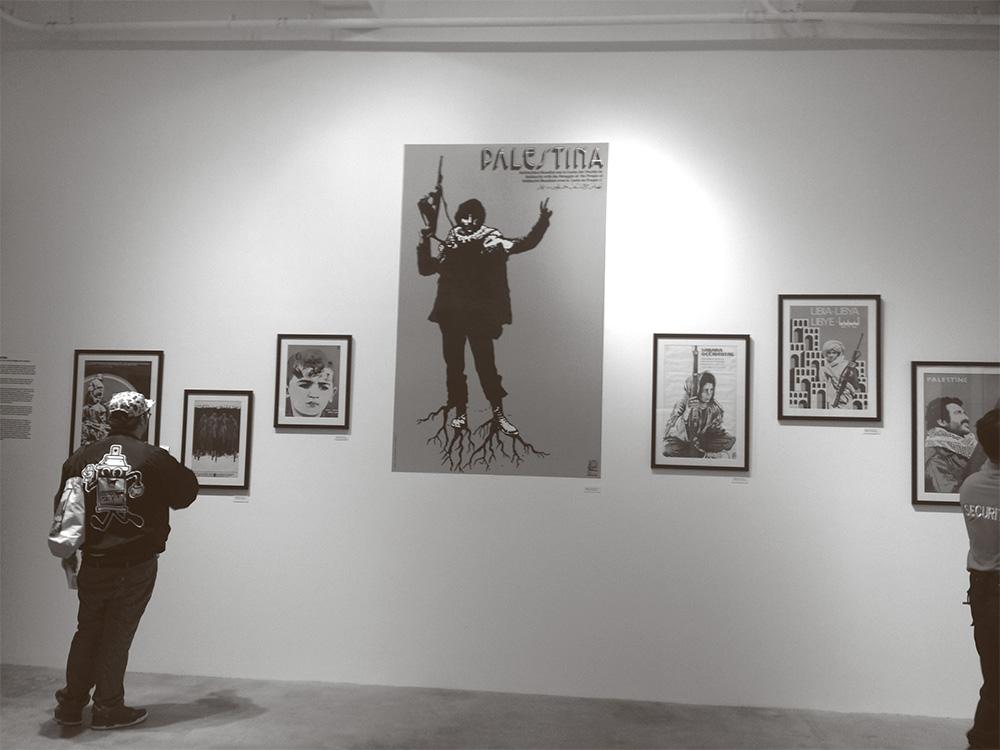The large poster in the middle of the image above by the Cuban artist Victor Manuel Navarrate may be viewed in detail here
____________________________________________
Excerpt
Histories Absolved: Revolutionary Cuban Poster Art and the Muslim InternationalMedina, Los Angeles
Tucked away at the end of Chung King Road in the Chinatown neighborhood of Los Angeles is Medina, a small gallery space that for the past five weeks has housed Histories Absolved: Revolutionary Cuban Poster Art and the Muslim International. On any other day, the single room, privately-owned gallery might go unnoticed; there are no signs indicating its presence amidst the bustling shops and restaurants of Chinatown. Last November and December however, the vibrant colors of the nineteen original print Cuban posters on display radiated through gallery’s glass entrance walls, making Medina hard to miss.
Histories Absolved: Revolutionary Cuban Poster Art and the Muslim International. Installation shot, Medina, Los Angeles (2014). Work featured: poster by Victor Manuel Navarrate for OSPAAL (1979). Offset. 52 x 83 cm. Image courtesy of Eszter Zimanyi.
Curated by Sohail Daulatzai, professor of Film and Media and African-American Studies at the University of California in Irvine, Histories Absolved showcased a modest subset of the many political graphic art posters produced and distributed globally in Tricontinental Magazine by Cuba’s Organization of Solidarity with the People of Asia, Africa, and Latin America (OSPAAAL). From the 1960s through the mid-1980s, OSPAAAL commissioned a number of artists to design posters promoting Cuba’s solidarity with, and support of, anti-imperialist and anti-capitalist struggles around the world. This culminated in a captivating array of designs encompassing a wide variety of visual styles. Often, these works make reference to traditional Asian, African, and Latin American art and visual culture, while simultaneously drawing on aesthetic elements from popular international art movements, including Psychadelic Art. The result was a potent and effective visual language of revolutionary action that appealed to a vast transnational audience, and continues to resonate with uprisings and political movements today.

